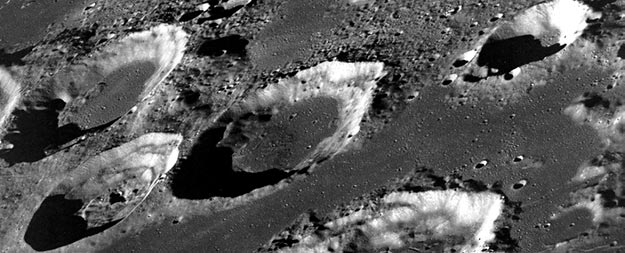We think of the Moon as a dry and dusty sort of place, but over the years, scientists have learnt that Earth’s satellite is actually rather loaded with water – in volcanic deposits, in its chilly poles, in the permanent shadows of its craters.
But it looks like water has also been hiding somewhere else, in significant abundance: the lunar subsoil, mere inches from the Moon’s surface.
We had hints it was there. Cassini detected trace amounts of it on its 1999 flyby. NASA probe Deep Impact detected it on a 2009 flyby, as did Indian lunar probe Chandrayaan-1. But the source of this water was unknown – scientists thought it had been deposited there, perhaps by the solar wind or passing meteoroids.
It wasn’t really considered that the surface water may have been there all along. But new research has found that it probably was.
In 2013 and 2014, NASA’s Lunar Atmosphere and Dust Environment Explorer (LADEE) circled the Moon, using its Neutral Mass Spectrometer (NMS) to take readings of the Moon’s very thin atmosphere. It made 736 positive detections of water.
Two hundred and fourteen of these constituted 33 water releases that were unusually high – 29 of which coincided with known annual meteoroid streams, with many small lunar impacts. So, meteoroid hits Moon; somehow, water appears. But don’t meteoroids contain water?
Well, yes. But not enough to create the abundances seen in the lunar atmosphere.
“To account for the relatively large intensities of the detected events, our analysis reveals that impacts must yield an amount of water 5.4 to 12.8 times the impactor mass. The impactor itself cannot be the prevailing source of the observed water as its water content is only a few tenths to a few percent of its overall mass,” the researchers wrote in their paper.
“Instead, it most probably comes from adsorbed water on regolith grains that is desorbed by the shockwave that expands across the impact site.”
So what of those four water releases that didn’t coincide with known meteor streams? According to the researchers, they could indicate meteor streams we don’t know about.
By analysing the amount of water released, the research team concluded that the top eight centimetres (three inches) of lunar regolith are dry as a mummy’s bone.
However, go deeper than that – and at least to a depth of three metres – water is uniformly distributed, at concentrations of up to 0.05 percent. This is the lower end of the permanent wilting point here on Earth, so still pretty dry. But not completely dry, as previously thought.
The team also calculated how much water is lost every year from lunar impacts, and arrived at as much as 200 tonnes. That would seem to indicate that the Moon has always, or almost always, had a whole bunch of water.
“The Moon – and particularly the permanently shadowed regions – most probably has a net water loss regime,” the researchers wrote. “To sustain this loss rate over geological time, the water must have been delivered long ago, or it was present at lunar formation.”
Will that help us establish a Moon base? Well, maybe. It might not be practical to extract that water, for instance – but it could point us towards a better understanding the origin of water on the Moon, and how it is gradually being depleted.
Source: https://www.sciencealert.com/
Dear User/Visitor! Please, answer on our questions: tick off one of the positions – your answer will make us able to improve our site and make it more interesting and useful!


